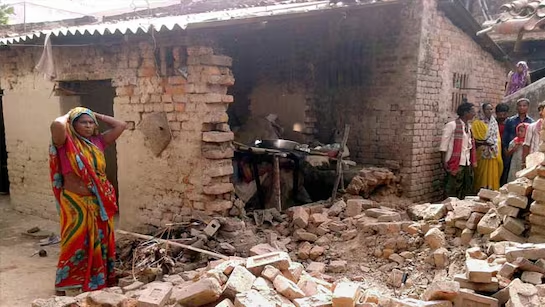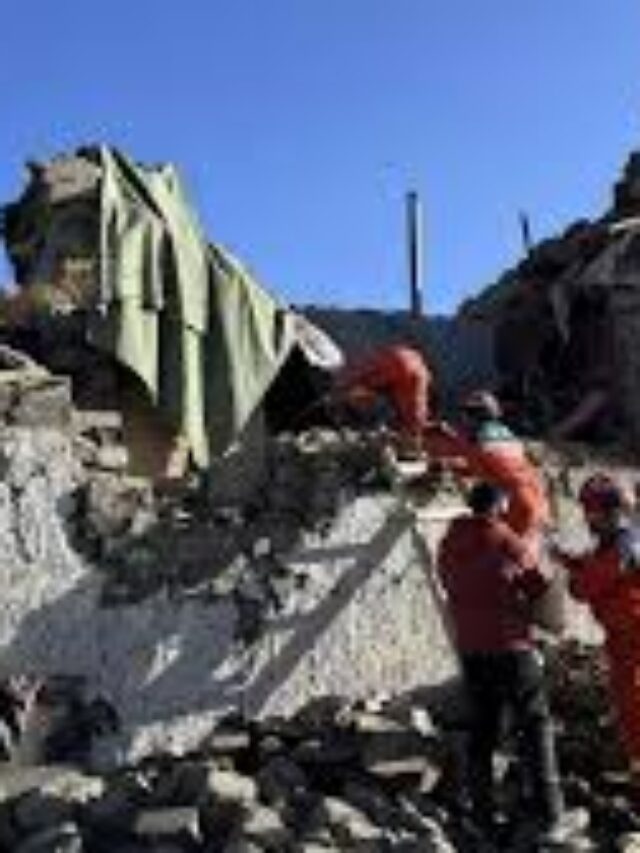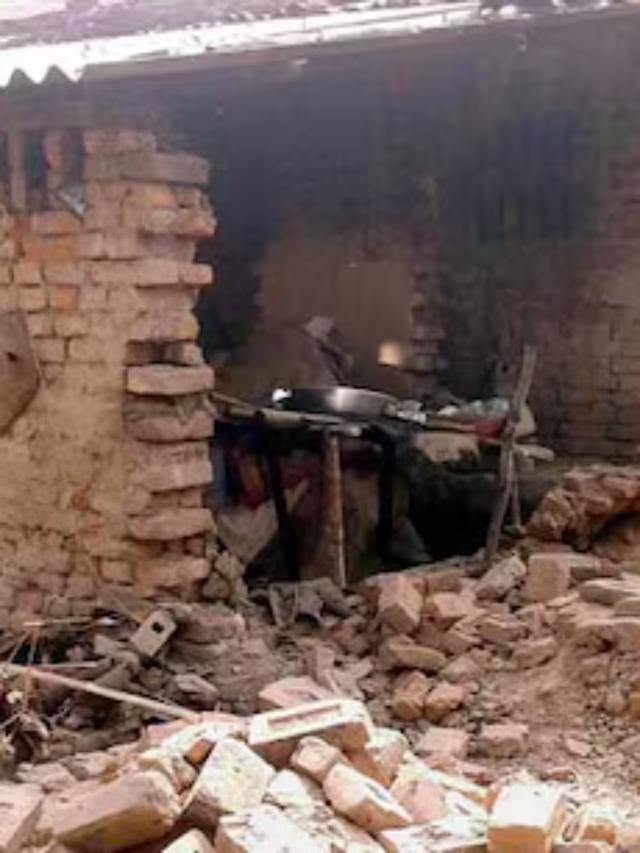
Earthquake in Bihar : A Comprehensive Analysis
Earthquake Shakes Bihar
Recently, Bihar experienced a series of intense tremors caused by a powerful earthquake that shook the region, leaving behind significant damage and disruption. The tremors were so strong that even the water in wells was observed to tremble. The seismic activity caused widespread panic among residents, disrupted daily life, and caused substantial structural damage. As the earthquake rattled the state, it drew attention to the region’s preparedness for such natural disasters and the importance of understanding how to respond to them.
Causes and Impact of the Earthquake
Causes of the Earthquake:
Earthquakes occur when there is a sudden release of energy within the Earth’s crust, usually due to the movement or collision of tectonic plates. This results in seismic waves that cause the ground to shake. Bihar’s recent earthquake was no different in terms of its origin. The region lies near several active tectonic plate boundaries, making it prone to seismic activity. The Indian Plate, moving northwards, is constantly colliding with the Eurasian Plate, leading to the formation of the Himalayan range and triggering seismic events in surrounding areas. Earthquake in Bihar
Though the exact epicentre of the earthquake in Bihar has been pinpointed by seismologists, the general cause is believed to be related to the subduction of these tectonic plates beneath the Indian Plate. Such movements are known to cause intense earthquakes in areas close to fault lines, such as Bihar.
Impact of the Earthquake:
The earthquake’s impact on Bihar was widespread and significant. Buildings across the region, especially older structures that were not built to withstand seismic activity, suffered severe damage. Many homes collapsed, while others were left with deep cracks in the walls, posing a danger to residents. Streets were cracked and impassable, with some roads collapsing entirely, making rescue and relief efforts challenging.
The earthquake also caused a disruption in power supply and telecommunications, leaving many without electricity and communication for extended periods. The collapse of infrastructure led to immediate challenges in responding to the crisis. In addition, gas lines were disrupted, raising concerns about the risk of fires or explosions in the aftermath of the tremors.
One of the most significant impacts was the emotional and psychological toll the earthquake took on the people of Bihar. Many individuals were left stranded in the middle of the night, with no immediate shelter or resources to survive. The trauma of the event, coupled with uncertainty about aftershocks, led to increased anxiety among residents. The fear of further tremors prompted many to flee their homes, seeking refuge in open spaces and relief camps. Earthquake in Bihar
Landslides and Cracks:
In addition to structural damage, landslides and cracks in the ground were also a direct consequence of the earthquake. In hilly or mountainous areas, the sudden shaking of the earth can loosen soil and rocks, resulting in landslides. Bihar, though primarily flat, has some hilly terrain in its northern region, where such issues were observed. These landslides not only blocked roads but also caused further damage to buildings and infrastructure, making it even more difficult for emergency responders to reach affected areas.
Precautionary Measures and How to Respond
Key Precautions During an Earthquake:
Though earthquakes cannot be prevented, there are several precautionary measures that individuals can take to protect themselves during seismic events. It is essential to be prepared in advance and know the safety protocols to minimize the impact.
Seek Shelter Under a Sturdy Structure:
During the tremors, individuals should take shelter under a sturdy table, desk, or any other furniture that can shield them from falling debris. Staying indoors is recommended, as being outdoors exposes individuals to falling structures and other hazards.
Stay Away from Windows:
People should avoid standing near windows during an earthquake, as the glass can shatter and cause injuries. The risk of being hurt by flying debris is also significantly higher near windows and glass doors.
Keep Away from Heavy Objects:
Large or heavy items, such as bookshelves, refrigerators, and cabinets, can fall during the shaking. It’s advisable to move away from such objects to reduce the risk of injury from falling items.
Switch Off Gas and Electricity:
After the earthquake, there is an increased risk of fire due to ruptured gas lines or damaged electrical wires. To minimize this risk, it is crucial to switch off the gas supply and electrical connections in the aftermath of the tremors.
Evacuate to Safe Open Areas:
If possible, individuals should move to open areas away from tall buildings or structures that could collapse. Once the shaking stops, people should exit their buildings calmly and proceed to a designated safe zone.
Remain Calm and Alert:
It is crucial to remain calm during and after an earthquake. Panicking can lead to confusion and accidents. People should be alert to any aftershocks that may follow and be prepared to take further protective actions.
Role of Government and Authorities in Earthquake Management
Preparedness and Disaster Response:
In the aftermath of such a powerful earthquake, it is imperative that the government and local authorities take swift action to manage the disaster and assist affected individuals. Governments must ensure that their cities and towns are equipped with disaster management systems that are ready to respond immediately to natural calamities. This includes having emergency services, relief teams, and first responders on standby to provide immediate aid.
Additionally, the government needs to focus on the construction and maintenance of infrastructure that is resistant to earthquakes. Buildings and roads should be designed to withstand seismic activity, particularly in regions that are known to be prone to earthquakes, such as Bihar.
It is also essential for local authorities to ensure that there are enough resources, such as food, water, medical supplies, and temporary shelters, available for those displaced by the earthquake. Promptly setting up emergency relief camps and distributing necessary resources can go a long way in reducing the impact of such disasters on the population. Earthquake in Bihar
Awareness and Education:
Another key role of the government is to educate the public about earthquake safety. Many individuals may not be aware of the precautions they should take before, during, and after an earthquake. Governments must implement awareness campaigns that inform people about the risks and appropriate response measures. Schools, communities, and workplaces should hold regular drills to ensure that everyone knows what to do in case of an earthquake. Earthquake in Bihar
Conclusion: Preparing for the Unpredictable
Earthquakes are unpredictable natural events that can have devastating consequences, as seen in Bihar. While we cannot prevent them, we can take proactive steps to mitigate their impact. Understanding the causes and effects of earthquakes, along with implementing precautionary measures, can save lives and minimize damage. Furthermore, it is vital for governments and authorities to take responsibility for disaster preparedness and response to ensure that the people are well-equipped to handle such calamities.
The recent earthquake in Bihar has highlighted the vulnerability of certain regions and the pressing need for more robust disaster management systems. By fostering a culture of preparedness, education, and resilient infrastructure, we can ensure that future earthquakes cause less harm and that the people of Bihar, and other such vulnerable regions, are better protected.
Do follow Indian News
Latest Post
- “बसंत पंचमी: माँ सरस्वती की आराधना और ज्ञान का पर्व” | “माँ सरस्वती: ज्ञान, संगीत और विद्या की देवी” | Basant Panchami 2025: Celebrating Knowledge, Wisdom, and New Beginnings
- American Airlines Jet Collide Near Reagan Airport | Shocking Collision: American Airlines Jet and Army Black Hawk Helicopter Crash Near Reagan Airport – 5 Key Facts
- होलीका दहन कथा प्रहलाद होलिका | प्रहलाद और होलिका की पौराणिक कथा | Holika Dahan Story | The Mythological Tale of Prahlad and Holika you must know in 2025
- Sri Lanka vs Australia 1st Test : Sri Lanka vs Australia 1st Test: Thrilling Day 1 Action and Live Score Updates
- Judge Blocks Trump Aid Freeze | Judge Temporarily Halts Trump Administration’s Federal Aid Freeze Plan
Latest Comments
I have fun with, cause I discovered just what I used to be having a look for. You have ended…
If the whole world is against you, I am with the world ✌🏻
nice
Wow what great news for india
Follow Us
Share this post :









Leave a Reply